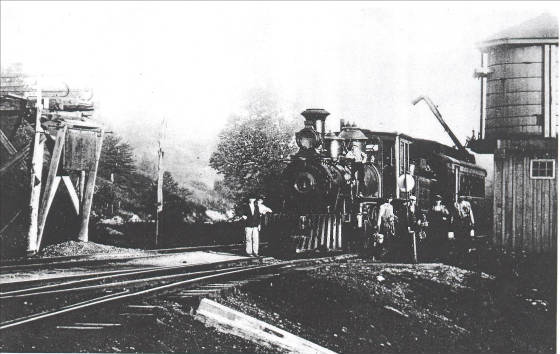|

|
| Joyce
Coal Company, Hitchins
c.1925 |
By 1874
the Eastern Kentucky Railway had been extended just over 11
miles to Willard. This came about as the result of an
agreement with the owners of two blast furnaces in Ironton,
Ohio. The iron manufacturer had access to large quantities of
coal and iron ore deposits in the Willard area and beyond.
There was and agreement stating that if the Eastern Kentucky
Railway would extend to this area, payment would be received
in the form of shipments of iron ore and coal. This agreement
came to an end as a result of the poor quality of coal and
iron ore required to produce profitable products for the blast
furnaces. The Eastern Kentucky Railway filed a grievance due
to this breach of contract and won in court. Payment came in
the form of property that was rich in the lesser natural
materials. A beginning a financial problems! Stops were also added at Vincent before
Hitchins, Reedville before Willard, and Bellstrace before
Webbville.
|
|
| Newspaper clipping of Mr. James Polk
Flaugher |
The
United States saw the assassination of President James
Garfield in 1818. It was that same year when the Eastern
Kentucky Railway was looking to make the company available to
larger markets. In December of that year, the Elizabethtown,
Lexington, and Big Sandy Railroad completed a line between
Ashland and Lexington. It crossed the Eastern Kentucky Railway
at a point that became known as Hitchens. In 1889, the
Maysville and Big Sandy Railroad was opened between Ashland
and Cincinnati, crossing the Eastern Kentucky
Railway at Riverton.

|
| Willard Water Tank,
c.1885 |
|

